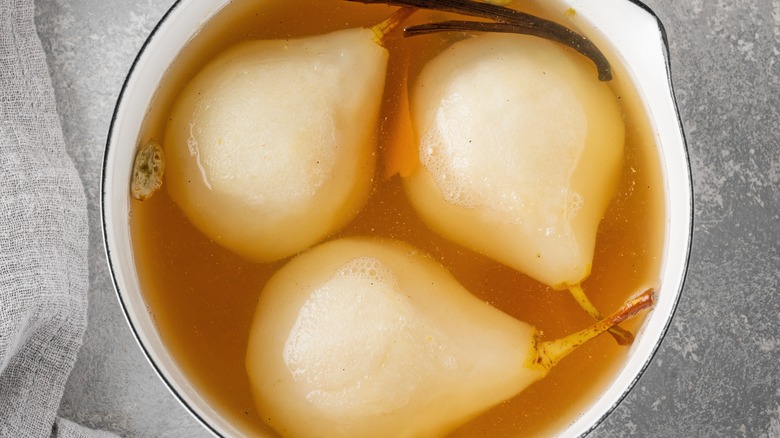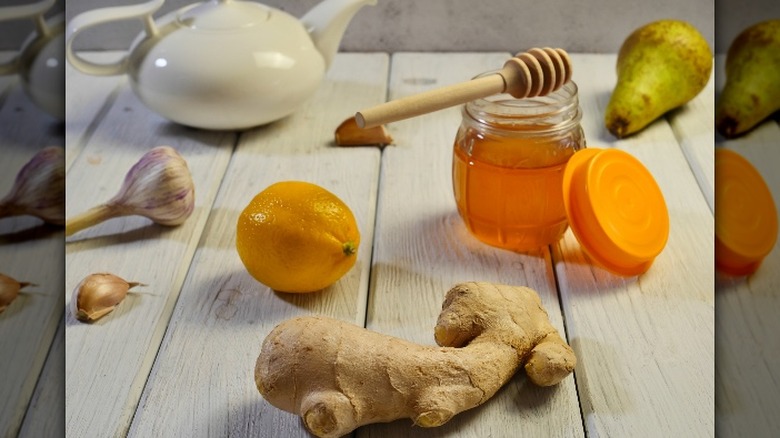Korean Baesuk Features Sweet, Steamed Pears As The Key Ingredient
Over the past few decades, Korean cuisine has made it into the limelight of global culinary trends. Korean barbecue joints abound in the Western hemisphere, while kimchi and gochujang are popular ingredients that Americans now fuse into grilled cheese, pasta, and meat dishes. Baesuk is a lesser-known delicacy that demonstrates how Koreans also use food as medicine. Considered a flu remedy, fruit punch, and delicate dessert all in one, Baesuk features sweet steamed pears as the key ingredient. Originating during the centuries-long reign of the Korean High Court in the Joseon Dynasty, Baesuk was first and foremost a type of spiced fruit punch made by boiling sliced or whole pears in water with peppercorns, honey, and ginger.
During the mid-20th century, baesuk became a popular dish across socioeconomic classes and saw its uses diversified. Now, baesuk encompasses various functions. The liquid consists of poached, spiced pear juice that can be enjoyed as a cold punch or a hot cough syrup. The drink's individual ingredients have long been touted for their curative properties for sore throats, making Baesuk a popular flu-season beverage. Pears may only be a flavoring agent for the drink version of baesuk, but they're the star of the show in a sweet and sophisticated baesuk dessert made by stuffing and steaming whole pears with jujubes, pine nuts, ginger, and honey.
How baesuk is made
There are two main methods of making baesuk: steaming and poaching. Poaching pears in liquid is the technique used to make hot or cold punch, while steaming whole, stuffed pears makes them into a juicy, tender dessert. Baesuk's base ingredients are the same for the dessert and drink varieties, including honey, fresh ginger, pine nuts, black peppercorns, and water. However, the way the ingredients are incorporated differs according to the cooking method. Making the drink requires you to press peppercorns into sliced or whole pears before boiling them in water with honey and ginger. The drink can then be served cold or hot with a garnish of fresh pine nuts. Cold baesuk is sweeter with a subtly spicy finish and often gets a splash of yuzu for a burst of citrus. Hot baesuk has a medicinal taste and is valued more for its soothing and healing properties than its flavor.
For an elegant dessert version of baesuk, whole pears are hollowed out, and their pulp is combined with honey, ginger, pine nuts, and pitted jujubes. The mixture is then stuffed back into the pear shell and left to steam for up to an hour. This will create a soft, melt-in-your-mouth consistency that is sweet, spicy, and nutty. This type of baesuk dessert can be enjoyed either hot or chilled.

